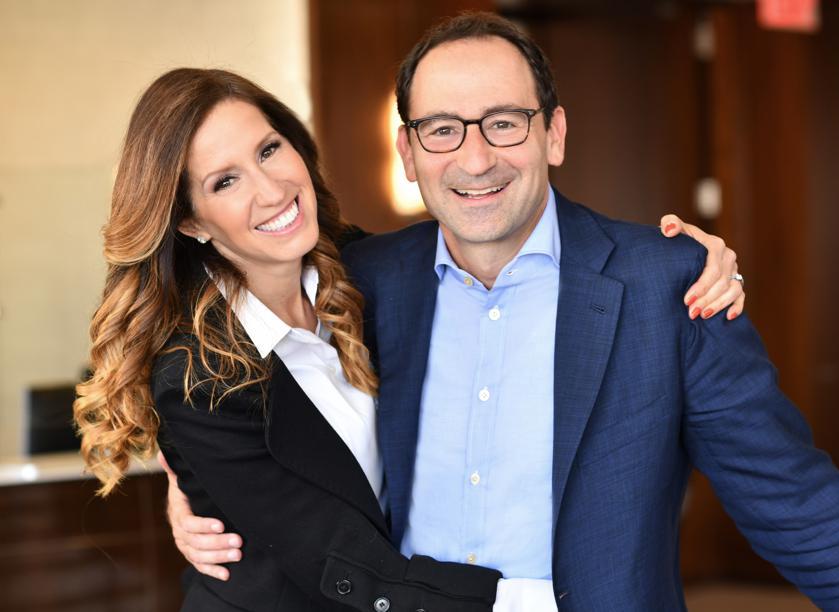
A foundation created by Jon Gray — president of private equity giant Blackstone Group — and his wife Mindy has awarded $25 million to seven research teams to fight BRCA-related cancers, and all but two of them are based here in Greater Boston.
The fact that most of the money from the Gray Foundation’s latest “Team Science’’ competition is being doled out to teams led by local researchers underscores Greater Boston’s strength in the life sciences sector — and particularly in cancer research.
Gray knows this from his day job. Under Gray’s leadership, Blackstone has bet heavily on Boston’s life sciences sector, in the form of lab-building investments via Blackstone-owned BioMed Realty or direct investments and partnerships lined up with local biotech companies.
Now, Gray and his wife are putting money into several of the region’s famed research institutions: Dana-Farber Cancer Institute, Harvard Medical School, Mass. General Hospital, and MIT. In particular, Gray cites the pioneering work of former Dana-Farber researcher Dr. David Livingston in the BRCA field, and all the experts who studied with Livingston and are continuing the quest he started to help people with BRCA1 and BRCA2 gene mutations detect or avoid breast, ovarian, or other cancers caused by those variants.
“There are a lot of incredible scientists [in Boston], leaders of innovation, and a particular strength in the BRCA field,’’ Gray said in an interview. “That’s why you see the majority of these ‘Team Science’ grants going to Boston.’’
The local awardees include separate teams led by two researchers at Dana-Farber: Judy Garber and Dipanjan Chowdhury. Other local recipients include groups led by Angela Belcher of MIT, Joan Brugge of Harvard Medical School, and Shawn Demehri of Mass. General. Each of the seven teams will get $3 million for their work, with the foundation keeping $4 million in reserve to help with related lines of research as they emerge for any of the recipients. In all cases, these teams are studying new approaches for prevention, detection, or treatment of BRCA-related cancers.
This is a personal mission for the Grays. Mindy Gray’s sister, Faith Basser, had a BRCA gene mutation and died in her 40s of ovarian cancer in 2002. The couple created their foundation in 2014, and today it serves two missions: fighting BRCA-related cancers and helping kids from low-income families in New York City. The Grays’ cancer-related donations have primarily gone to the Basser Center at the University of Pennsylvania, which they established in 2012, but the “Team Science’’ competition is for other BRCA researchers. The seven winners in this round were selected from more than 55 applications.
Dana-Farber chief executive Laurie Glimcher said she’s not surprised that most of the Grays’ money in the latest contest went to Greater Boston-based initiatives, given the cluster of biotechs, universities, and research hospitals here. She noted that about 60 biotechs have been spun out of Dana-Farber alone over the years.
“Boston is number one in terms of cancer research,’’ Glimcher said. “We have more academic medical centers than any other city. ... It’s an unbelievable life sciences ecosystem. There’s no comparison.’’
Glimcher said this sort of philanthropy is critical for researchers to do their work — particularly in a time of dwindling federal research funds. The Gray Foundation and others like it are often more willing to take a chance on a nascent idea than, say, the National Institutes of Health, said Garber, of Dana-Farber. Her project involves studying how non-cancerous tissues taken from patients with a BRCA mutation respond to certain cancer-treatment drugs. The hope is to develop a new way to essentially nip cancer in the bud by treating precancerous lesions before they turn deadly.
“The nice thing about the Gray Foundation is they will take a chance on high-risk, high-reward projects,’’ Garber said. “For the Grays, if you have something their scientists feel is promising, they’ll say, ‘here’s some money, you go after it.’’’
From Gray’s perspective, he remains hopeful that by focusing on BRCA mutations, the targeted approach can make a difference, and that fewer families have to face the tragedy that his sister-in-law endured.
“When we look at the decade-plus we’ve been at this, it feels like there’s been a huge amount of progress but of course we’re still not satisfied,’’ Gray said. “We recognize it’s a long journey. We’re certainly not at the end.’’
Jon Chesto can be reached at jon.chesto@globe.com.